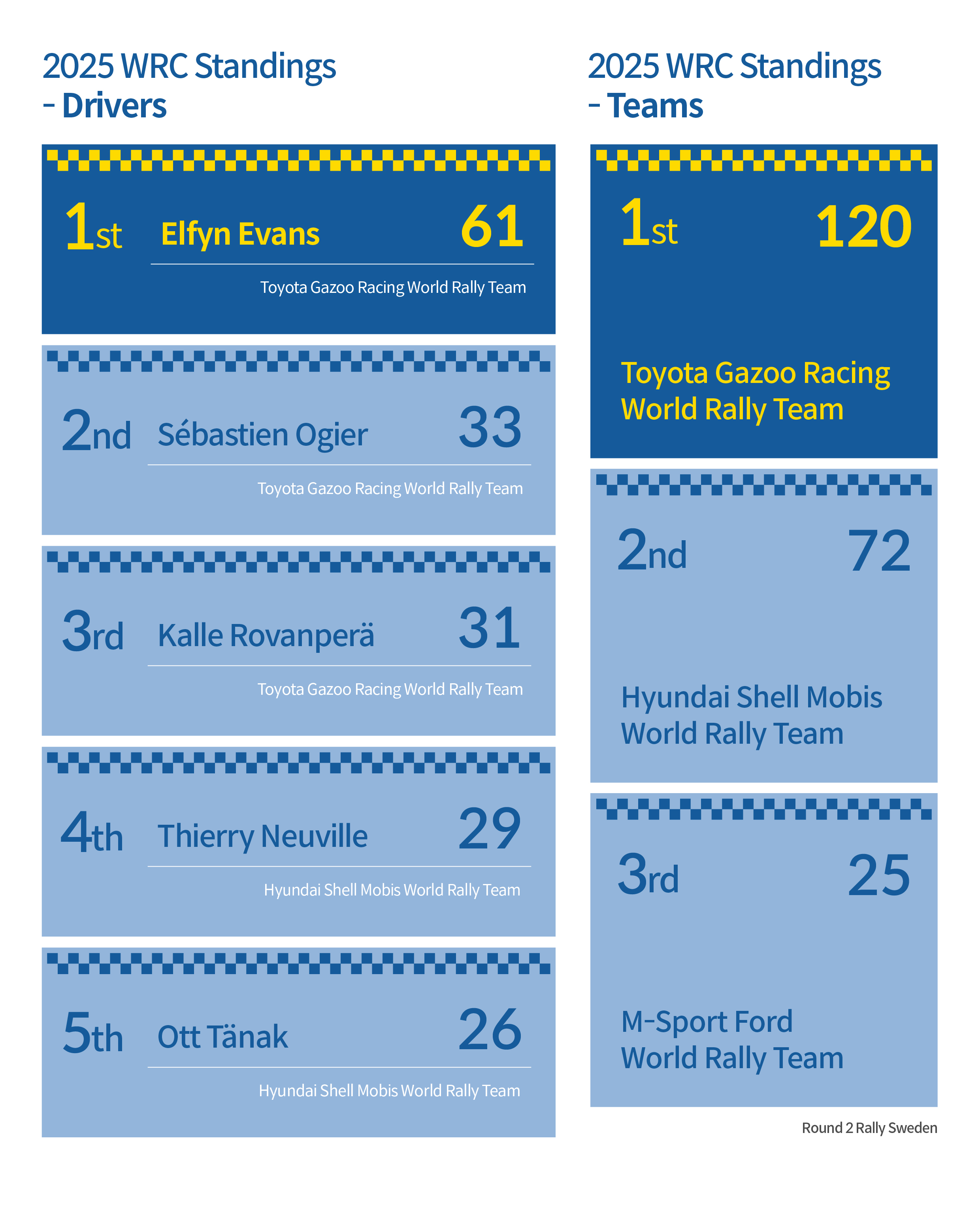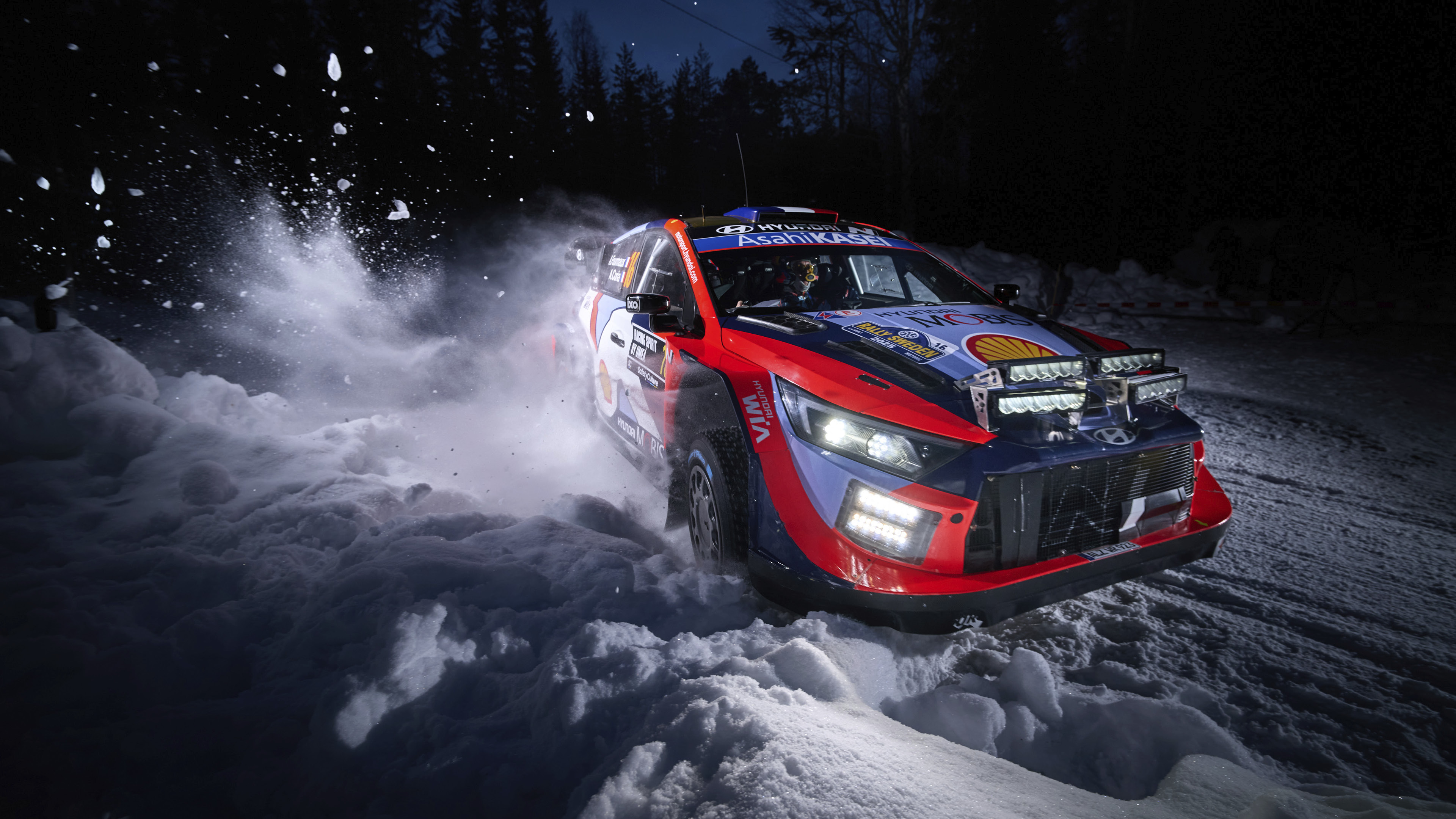
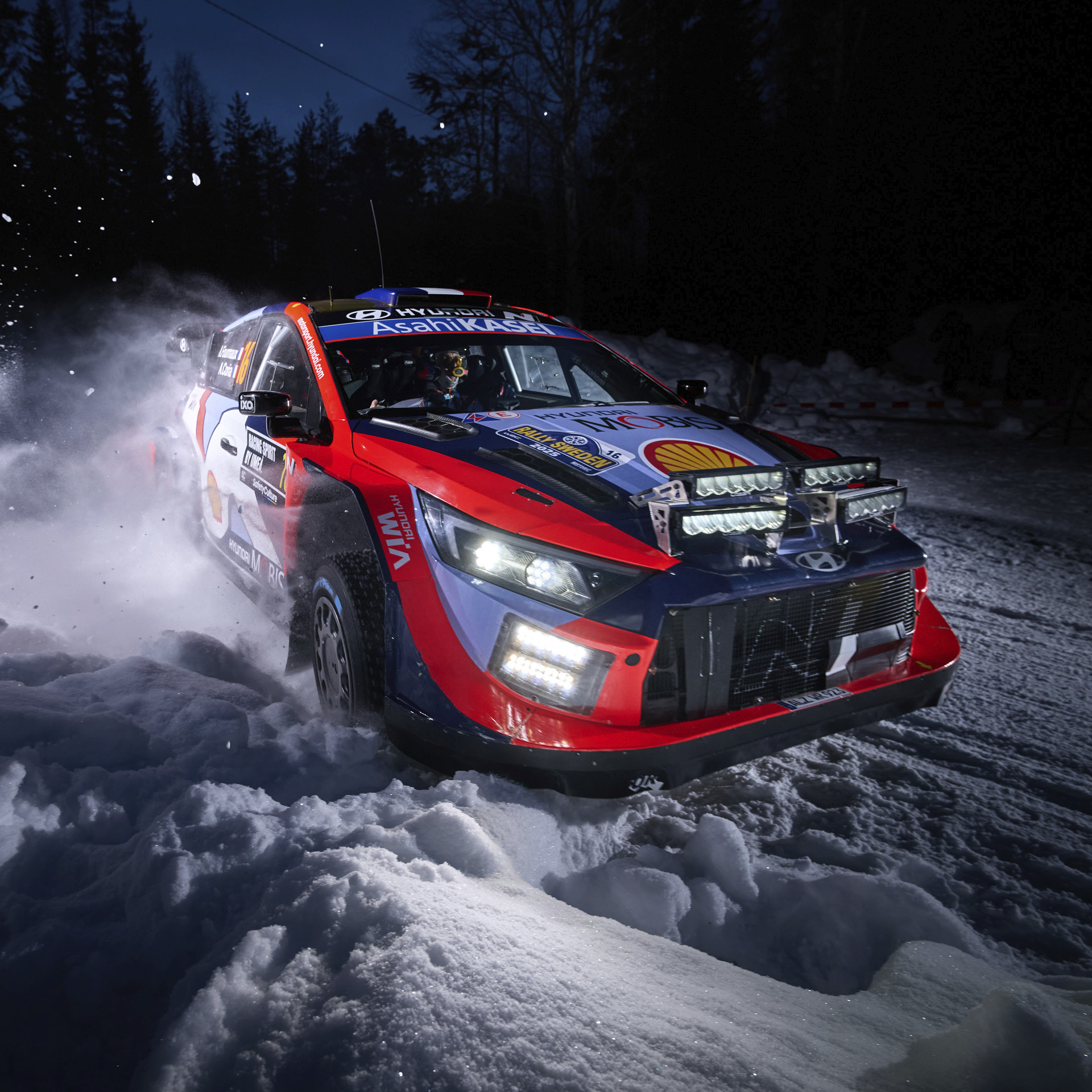


2025.03.11 Hyundai Motorsport Team
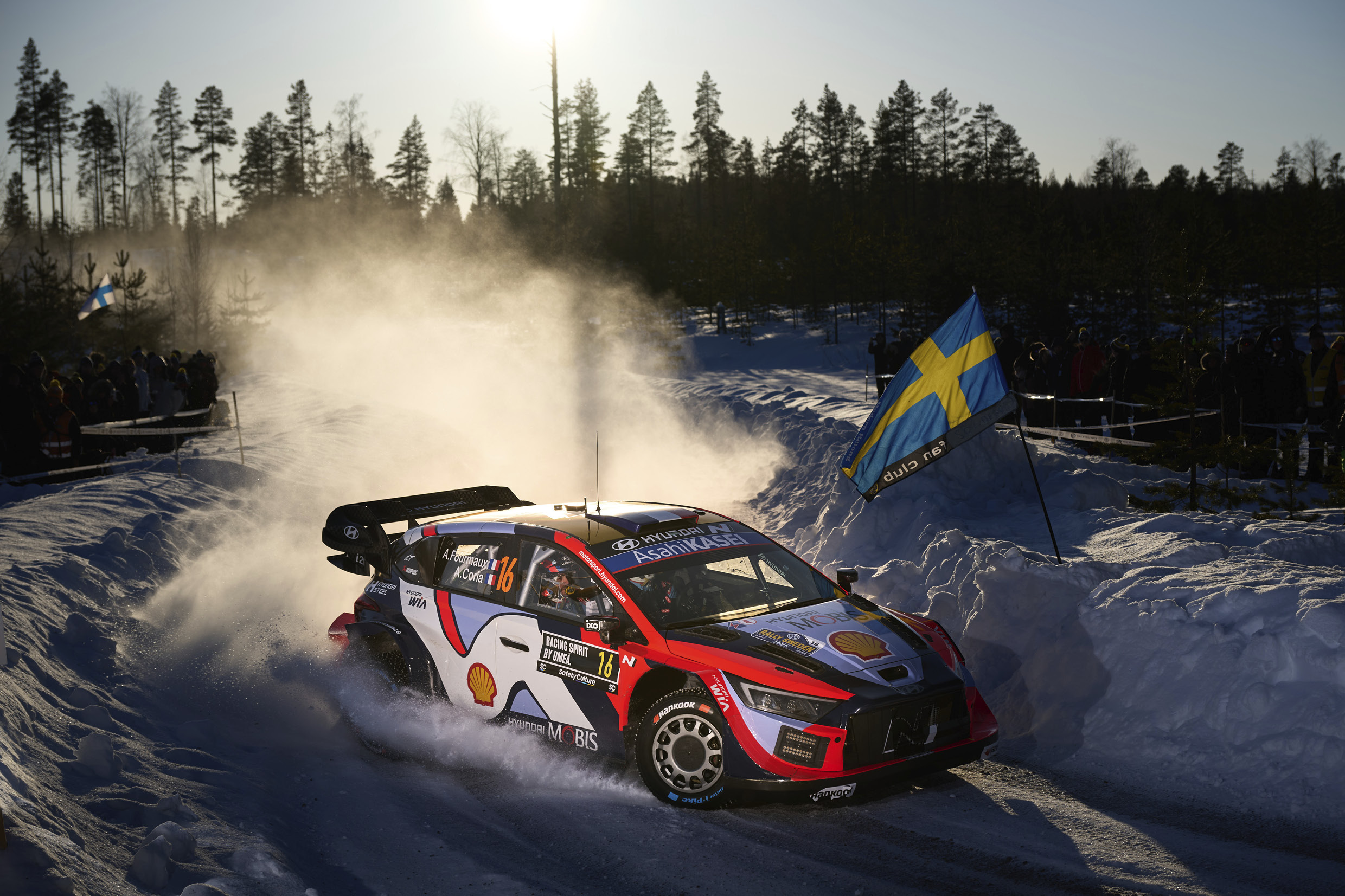
Following the season opener in Monaco at the Monte Carlo Rally, Sweden—now the second round—stands as the only full-snow event in the 2025 season. With stages made entirely of snow and ice, it offers the most distinctive environment of all 14 WRC events. Metal-tipped stud-ded tires deliver exceptional grip, and thanks to a course with fewer corners and a relatively straightforward layout, the rally cars can hit speeds that defy expectations. The result is a spectacle of high-speed runs and dramatic jumps, set against a breathtaking backdrop of snowy expanses and evergreen forests that thrill spectators.
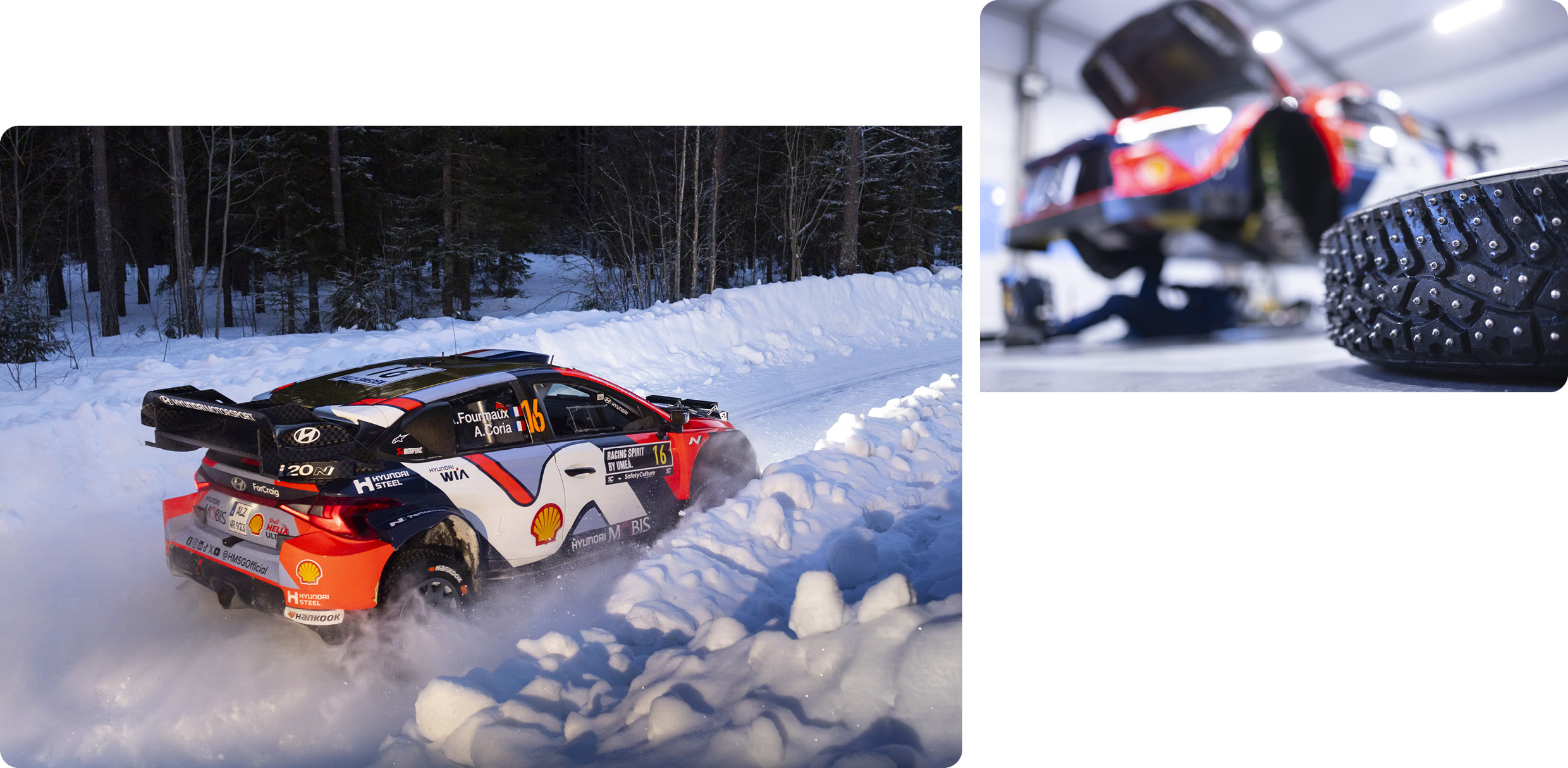
Another standout feature is the strategic use of towering snowbanks lining the course. This “wall-riding” technique, when mastered, enables rapid cornering—but one miscalculation can send a driver plunging into the snow and potentially force an early exit. With a change in tire supplier this year, quickly adapting to the new grip characteristics has become more critical than ever.
The challenging conditions of the Swedish Rally have traditionally favored local talent. The all-time leader is Sweden’s rally legend Stig Blomqvist, who notched seven wins. Fellow Swede Björn Waldegård is tied with Finland’s Marcus Grönholm at five victories each, while Toyota’s own Jari-Matti Latvala has secured four wins, ranking him third on the list. Among current competitors, Sébastien Ogier has three wins and Ott Tänak two, with Thierry Neuville, Kalle Rovanperä, Elfyn Evans, and Esapekka Lappi each adding a victory—showcasing an increasingly diverse international podium.
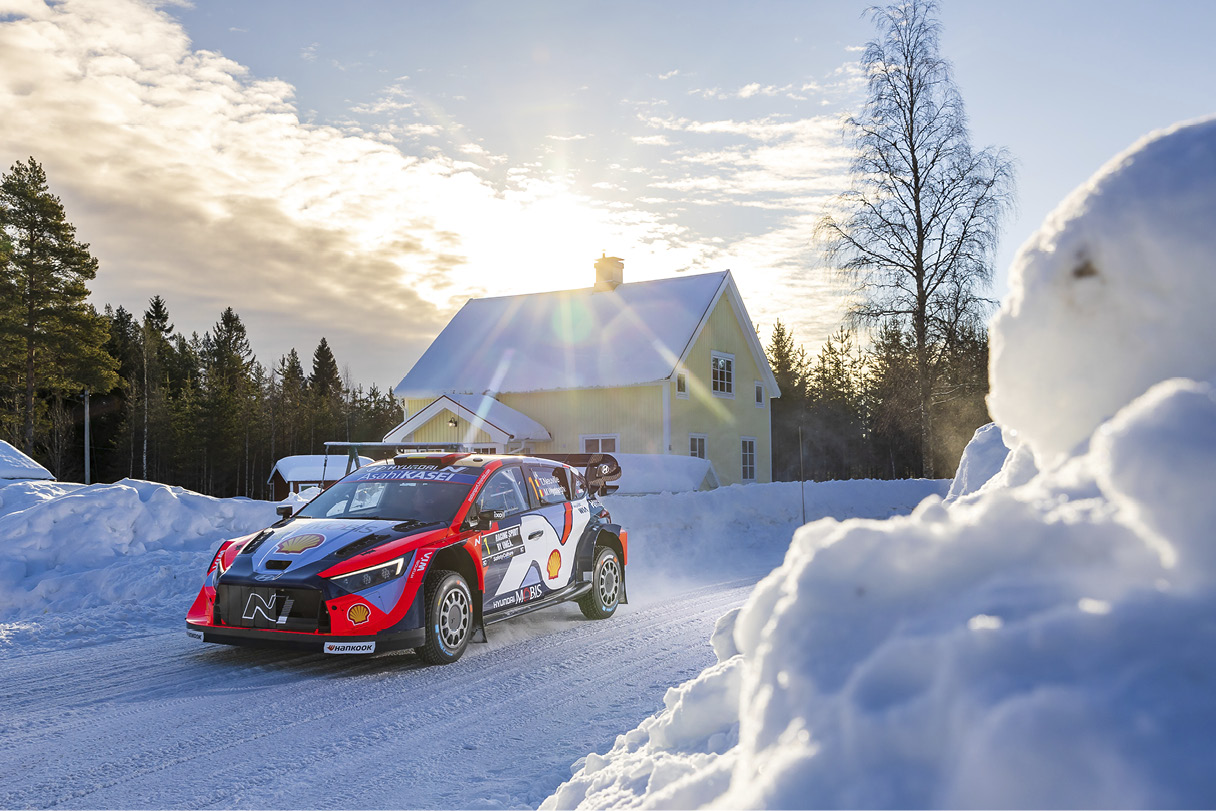
Founded in 1950 and with a history spanning over half a century, the Swedish Rally was traditionally held in Karlstad in southern Sweden. However, as global warming made it increasingly difficult to secure naturally snow-covered stages—melting snow turning into slush or repeated runs exposing dirt and gravel that could damage stud-ded tires—the future of the event was in jeopardy. In pursuit of a safer and more reliable racing environment, organizers moved the rally to Umeå in 2022. As the largest city in northern Norrland, Umeå lies at a latitude similar to Iceland’s and can see winter temperatures plummet below -30°C. This year, with the ice surface solidly frozen and snowfall ample, the rally delivered ideal conditions for a memorable event.
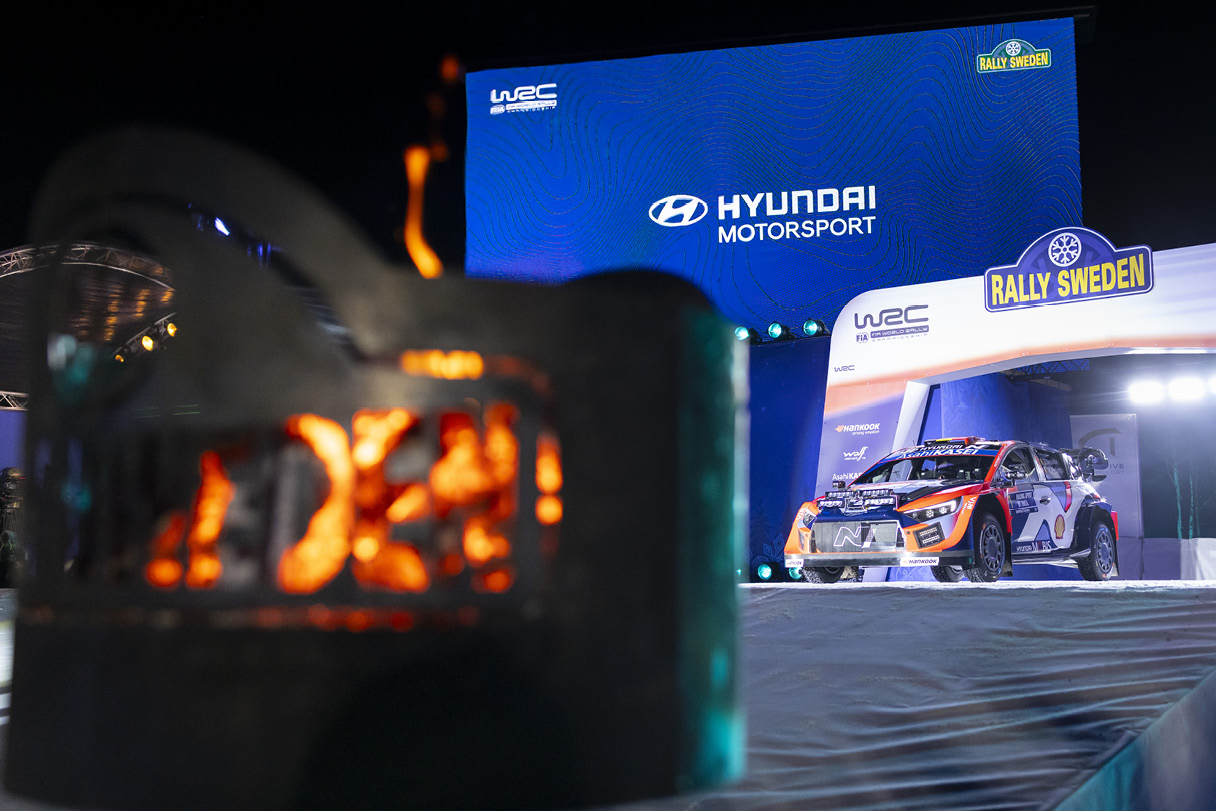
This round saw 61 rally cars take to the course—11 in Rally 1 and 26 in Rally 2. Hyundai kept things steady by fielding Neuville, Tänak, and rookie Adrien Fourmaux, even though there was chatter about adding a fourth car. Last year’s champion Neuville, who finally realized his dream title, returns as the defending champ after a disappointing sixth-place finish at the opener. Meanwhile, Tänak’s early season misfire—only fifth in Monte Carlo—has left rookie Fourmaux to fire up the team with a podium finish in third.
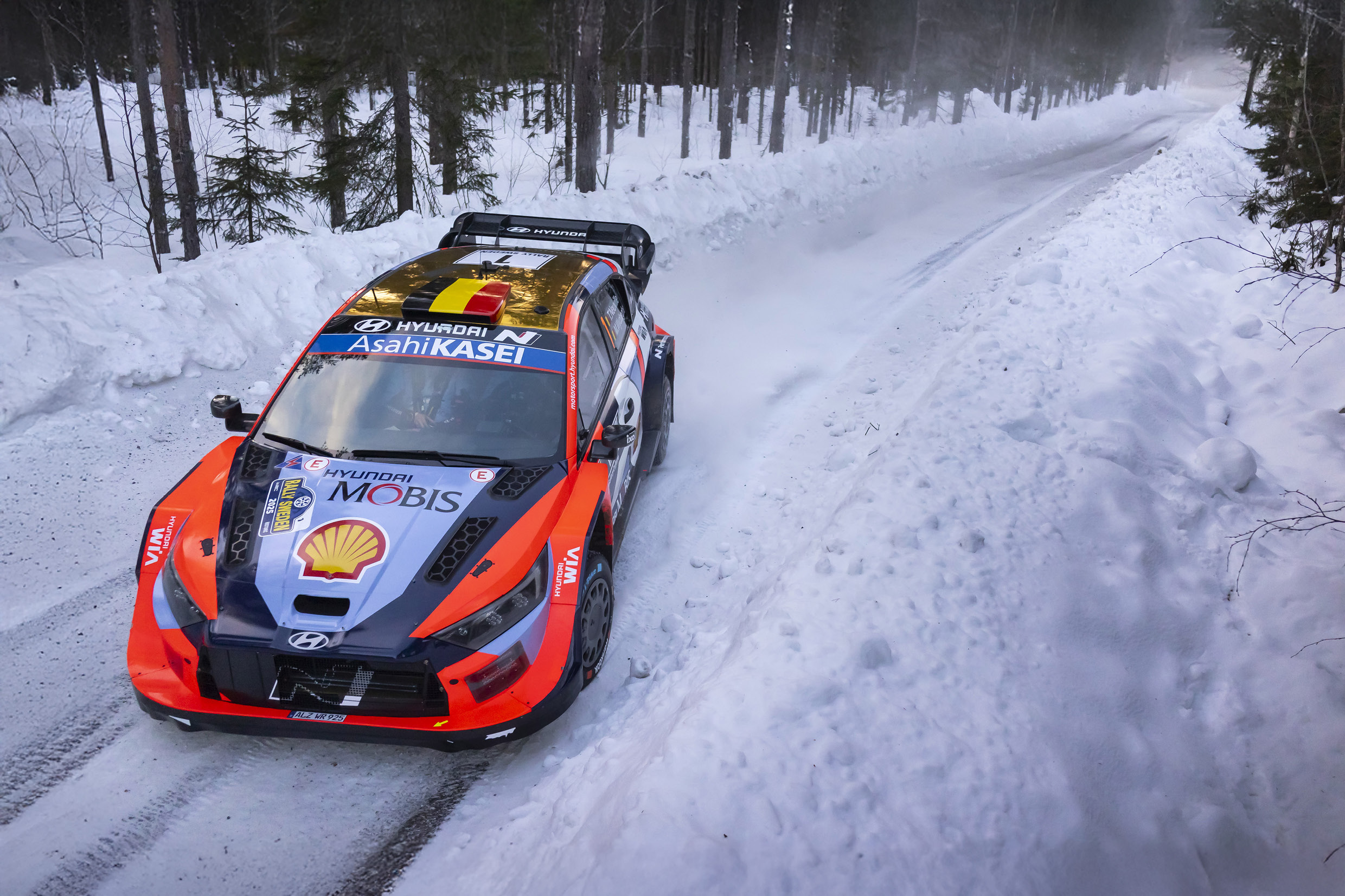
At the heart of this weekend’s action is Hyundai’s freshly updated beast. Debuting in Sweden, the team’s new rally car features a reworked suspension that switches out the old tilted damper for a vertical, race-tuned setup, and it’s been shaved down for extra agility. These upgrades are aimed squarely at fixing past weaknesses on high-speed gravel—setting the stage for impressive showings later in Estonia and Finland. With an entirely new machine on the grid, Hyundai now has a blank slate for dialing in perfect setup data.
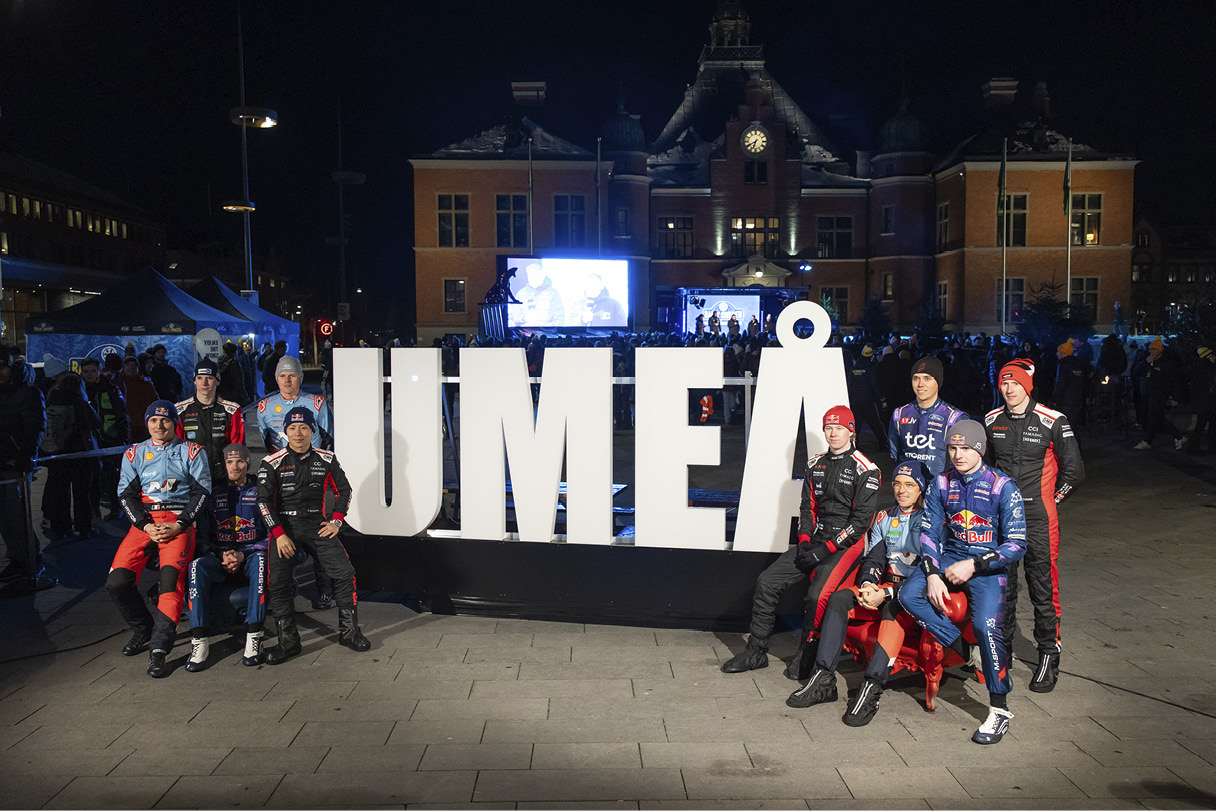
Over in the Toyota camp, four GR Yarises hit the pavement, with Evans, Rovanperä, and Takamoto Katsuta leading the charge, plus second-string driver Sami Pajari backing them up. Evans, who missed the mark as the team’s ace last year, sparked a resurgence with a solid second-place finish in Monte Carlo. In contrast, returning full-timer Rovanperä still seems a bit out of practice. Originally slated to drive for Toyota, Lorenzo Bertelli bowed out last minute due to business commitments. The second-generation billionaire and heir to the Prada fortune had been a regular in the WRC with M‑Sport Ford until last season.
Ford’s M‑Sport certainly didn’t hold back, rolling out four Puma rally cars. Regulars Grégoire Munster and rookie Josh McErlean led the charge, with part-timer Mārtiņš Sesks and privateer Jourdan Serderidis rounding out the lineup.
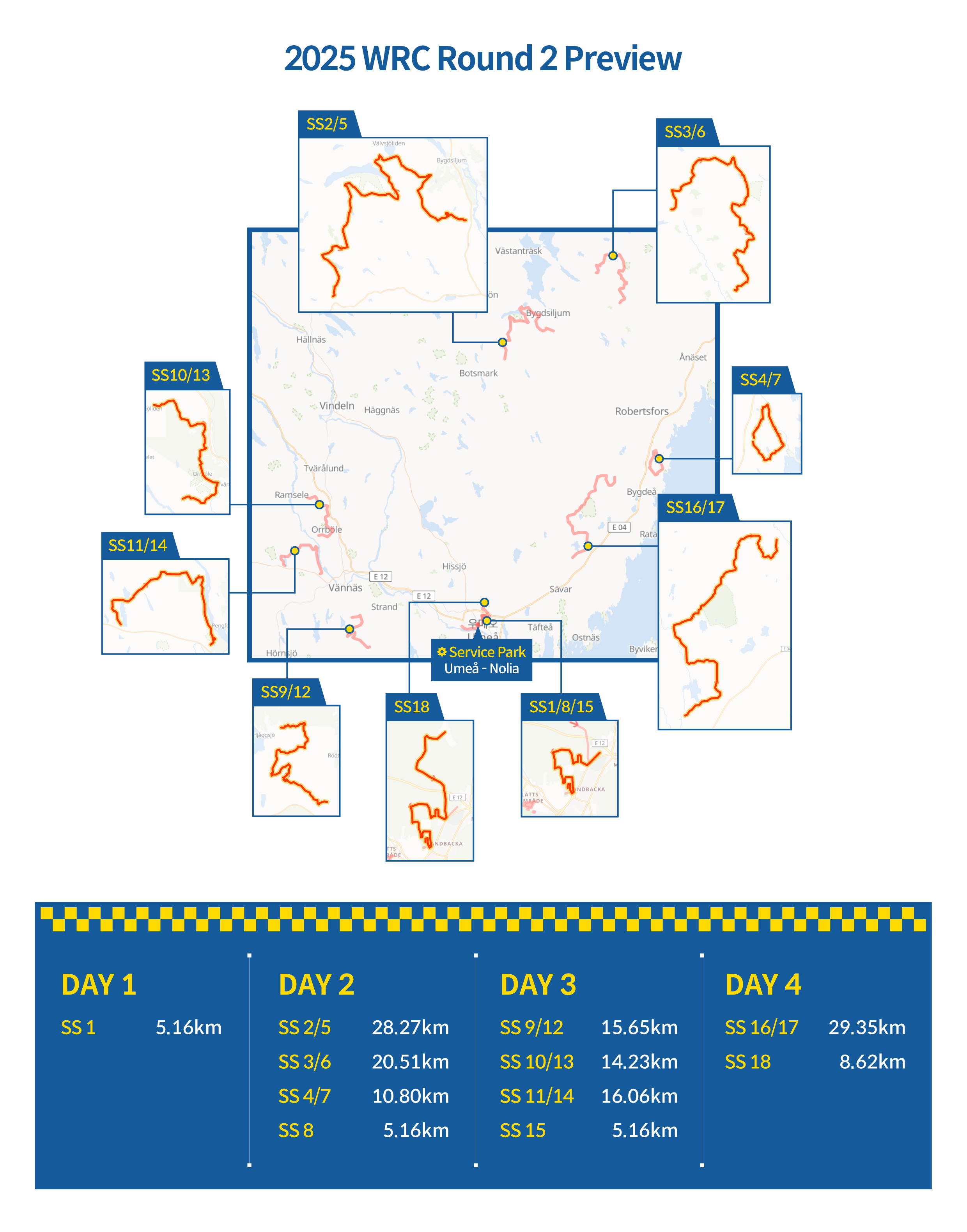
Set up near the rally HQ at Red Barn Arena, the SS1 Umeå Sprint is a surprisingly long 5.16‑km urban stage that’s anything but your typical city course. It kicked off Thursday’s action, wrapped up Friday and Saturday’s sessions, and was even extended into a Power Stage on Sunday morning. By 7 PM Thursday, darkness had already taken over—these days in Sweden, the sun’s long gone well before 5 PM.
Tänak showed some serious pace right from the shakedown. Video: WRC (https://www.wrc.com)
Day one was all about the SS1 stage. The running order saw Evans in the lead, followed by Fourmaux, Rovanperä, Tänak, and Neuville. Although last round’s winner Ogier wasn’t in the mix, Evans—despite handling road-cleaning duties—clocked the fastest time on SS1. By the end of the day, the overall standings were: Evans leading the pack, trailed by Rovanperä, Tänak, Fourmaux, and Neuville hampered by persistent communication issues.
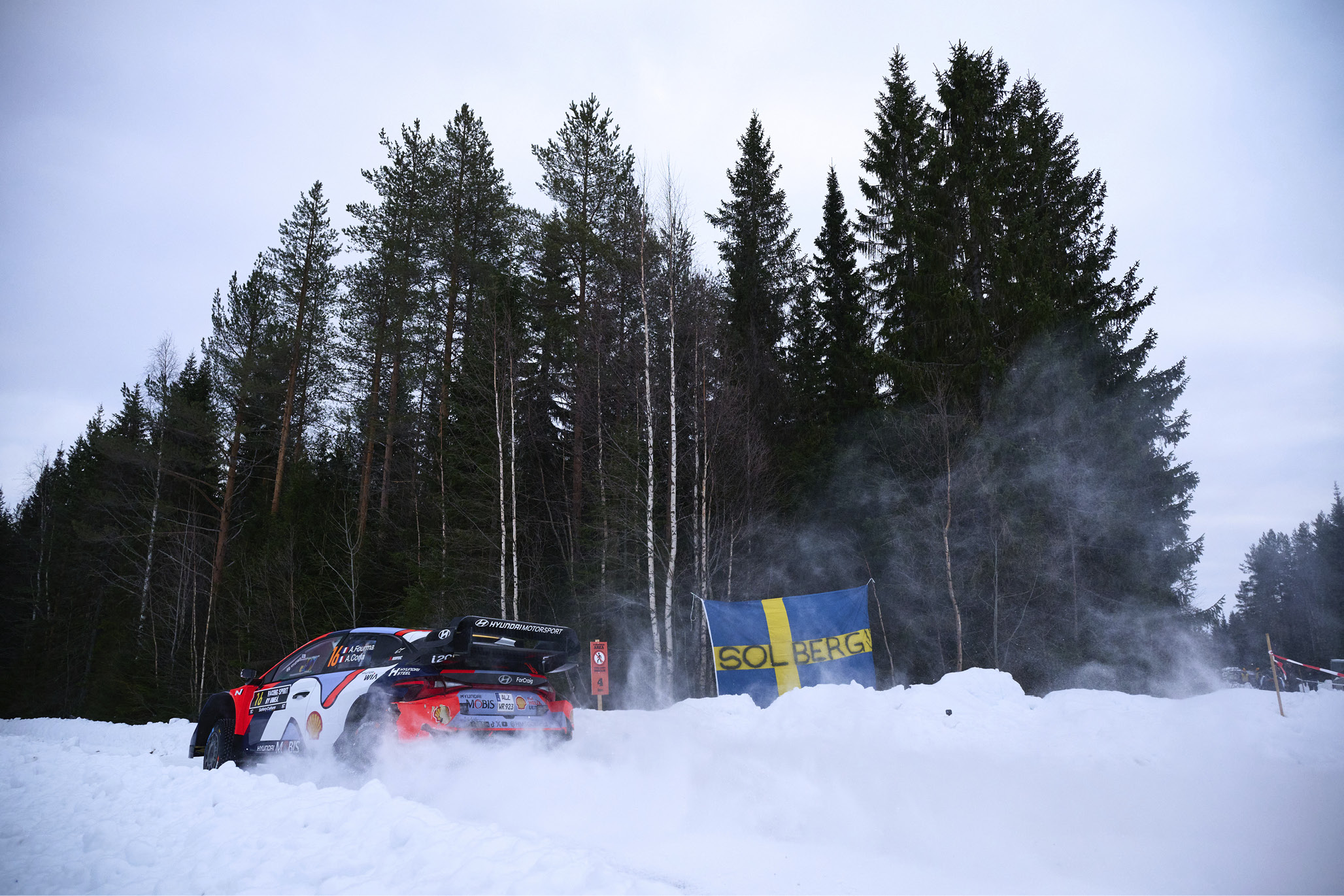
Friday, February 14, turned up the heat with a grueling 28.27‑km SS2 Bygdsiljum stage that kicked off a series of three repeats before wrapping up at the Umeå Sprint. The combined distance from stages SS2 to SS8 hit a whopping 124.32 km—the longest stretch of the event. SS2, an opening high‑speed forest run, demanded flawless teamwork between driver and co-driver to keep that blistering pace, all while navigating a tricky village section with a few jump zones thrown in for extra spice.
The newly ad-ded SS3 Andersvattnet stage transitioned from a narrow, technical section into a jaw‑dropping high‑speed forest road, while SS4 Bäck delivered a unique layout with start and finish points virtually side‑by‑side. Kicking off on a gentle village road that winds into a twisting forest track, SS4 tested both nerve and precision. Even though every team was rolling on stud-ded tires, spare tire counts set them apart—Hyundai opted for just one spare per car, while competitors like Rovanperä, Katsuta, and Munster loaded up with two.
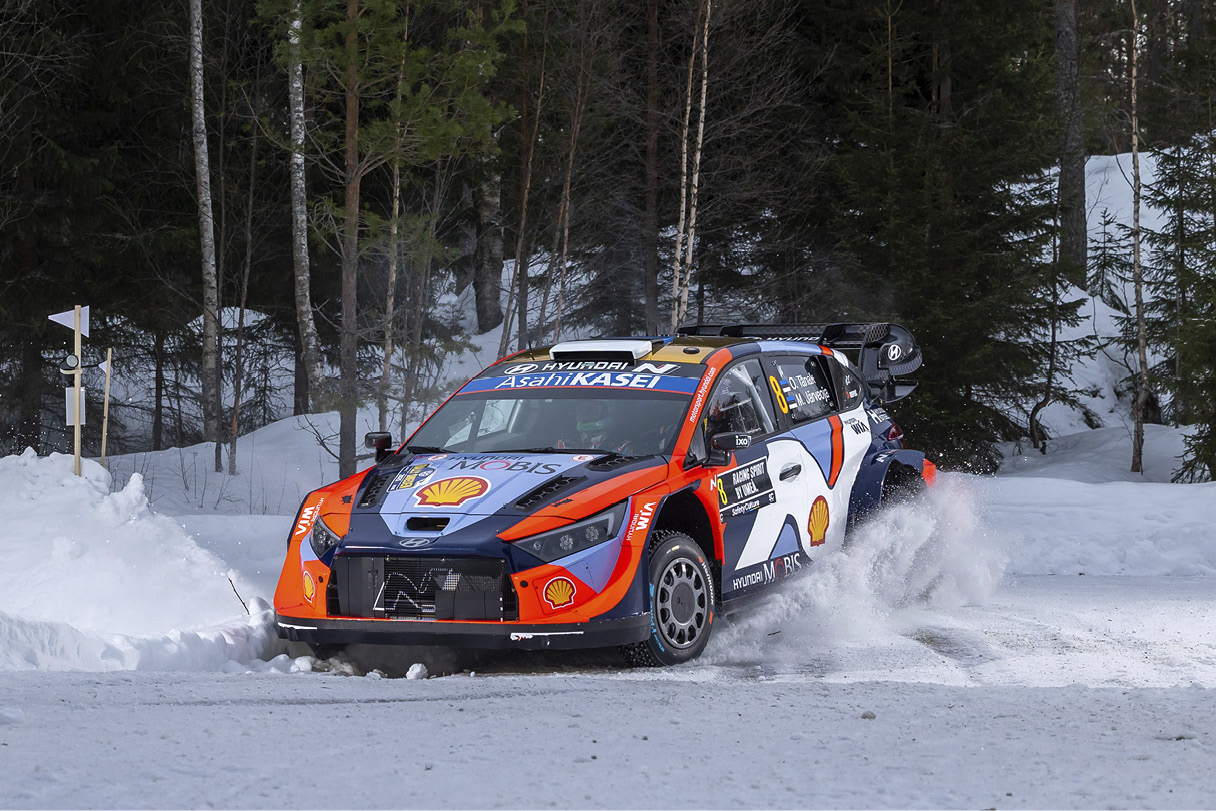
At the start of the race, Fourmaux absolutely demolished the competition with back‐to‐back fastest stage times. Video: WRC (https://www.wrc.com)
Evans kicked off SS2 by seizing the lead, with Tänak and Katsuta holding down second and third. Then, in SS3 and SS4, Fourmaux roared through the stages with consecutive fastest times—narrowing Evans’ gap by 1.9 seconds. Meanwhile, both Tänak and Neuville were struggling with grip issues and understeer. Right after SS3, Neuville explained, "I'm struggling, generally with the understeer. I can't do anymore, it is not fun, I will see if we can improve. The balance of the car seems to be changing."
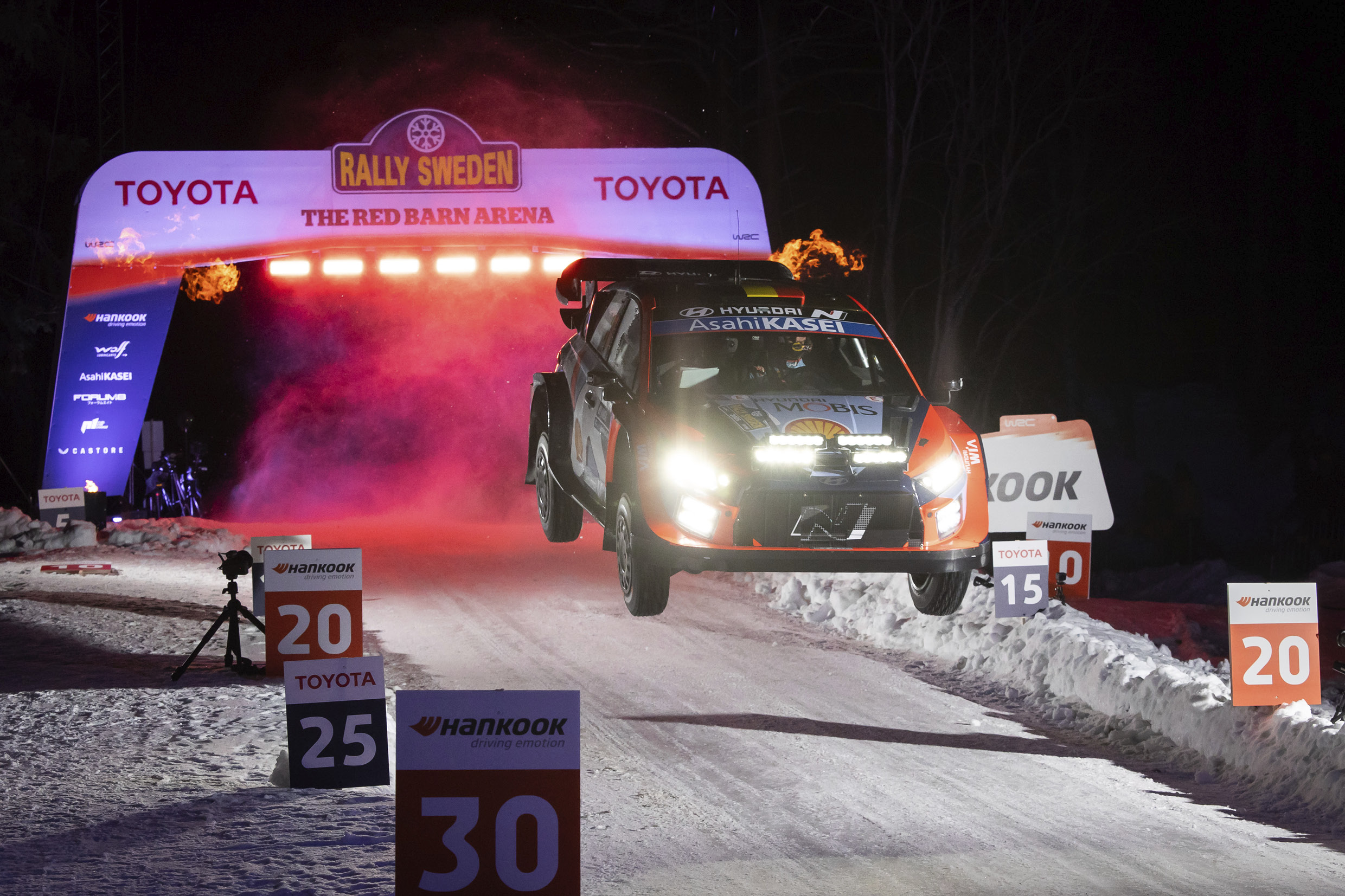
After a quick pit stop for lunch, the teams hit the track again in the afternoon, repeating the morning’s stages. Katsuta snatched the fastest time in SS5 to grab the overall lead, only for Tänak to be the quickest in SS6. Then in SS7, Neuville set the fastest time, and shortly afterward, Tänak edged past Katsuta to seize the overall lead. Post-stage, Tänak remarked, "I didn't do a good stage, spent time trying to save the tyres. I tried hard on this one, on the long straight at a junction left we hit a bank of snow at high speed. It's ok."
Returning to Umeå to complete SS8, Evans reclaimed the top spot while Katsuta moved into second overall. With Tänak, Fourmaux, and Neuville hot on the heels in positions three through five, the gap from Evans in first to Neuville in fifth was a razor-thin 9.1 seconds. Rovanperä, in sixth, trailed Neuville by 16.4 seconds.
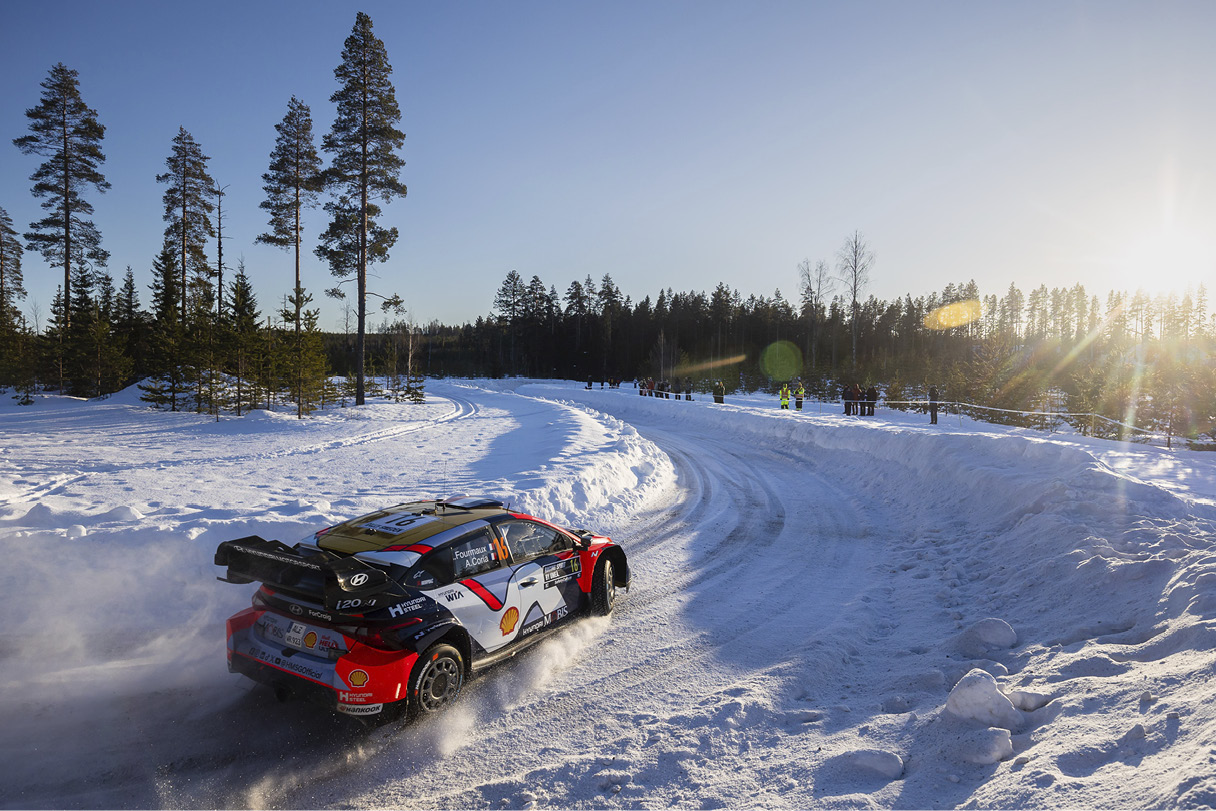
Saturday, February 15, kicked off with a 15.65 km SS9 stage, followed by three more stages split between morning and afternoon sessions, and wrapped up once again at the Umeå Sprint. The day’s seven stages ad-ded up to a grueling 97.04 km. The opening SS9, Vännäs, is one of the region’s most legendary rally stages—beloved since the early ‘90s for its mix of high-speed sections, technical twists, heart-stopping jumps, and narrow bridges after leaving the village.
Next up was SS10, Sarjöliden—a 14.23 km stage that may seem straightforward at first glance, but the blistering speeds demand precision braking into its downhill corners. Then came SS11, Kolksele, a stage that throws a mix of diverse and challenging elements at the drivers, combining rhythmic flows with sheer adrenaline. Today’s starting order was shuffled based on Friday’s results, with privateer Serderidis leading the charge, followed by Munster, Pajari, and McErlean. With snow falling steadily, the early starters had to clear the track of fresh powder, and all Rally 1 drivers elected to carry just one spare tire.
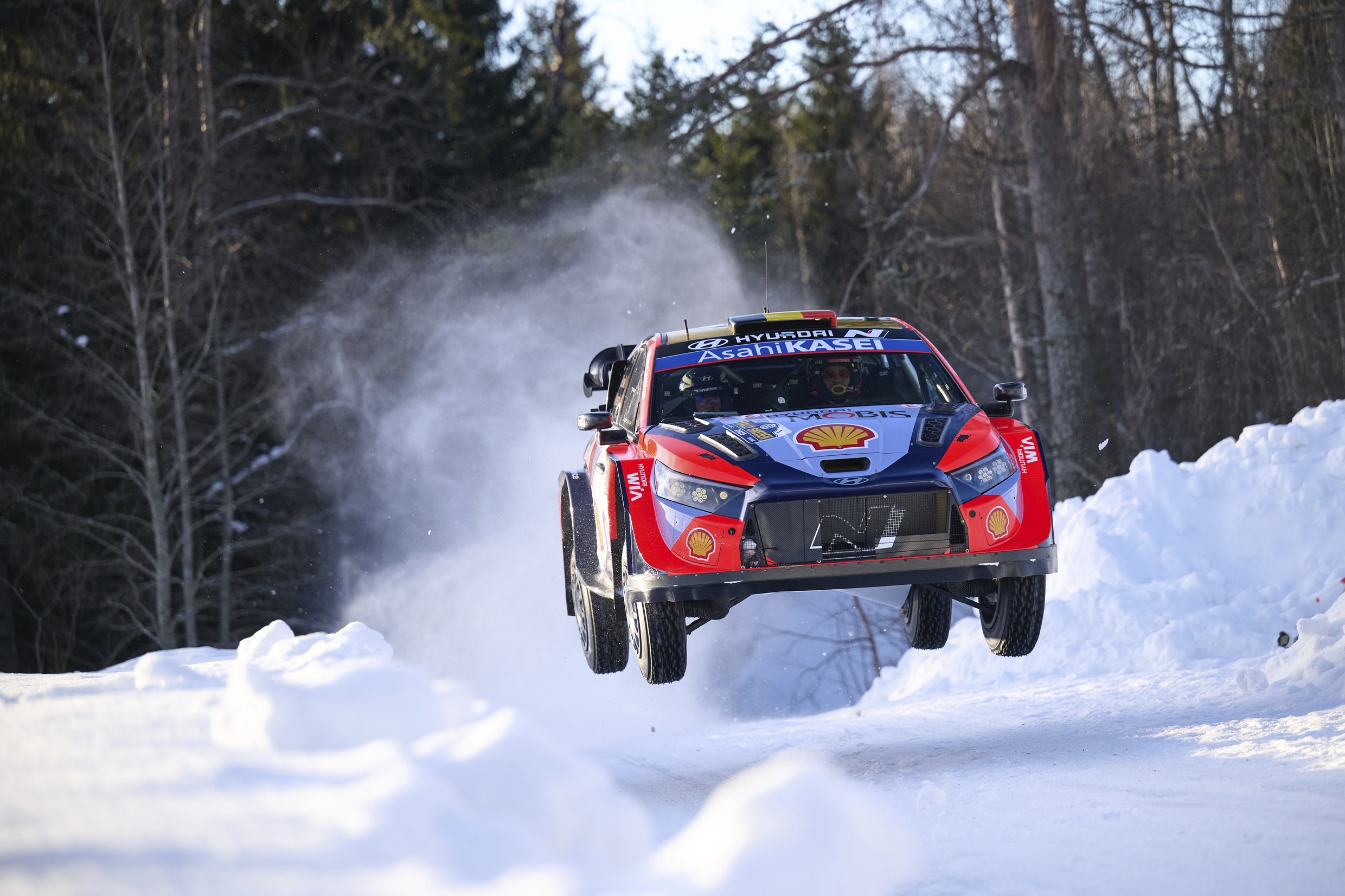
It was Rovanperä who took the opening win on SS9—his first stage victory of the rally. In SS10, leader Evans blasted away with the fastest time, though the gaps were still razor-thin. Even after fine-tuning his setup, Neuville’s understeer issues persisted. Still, in SS11, Neuville roared back with the fastest time to leapfrog Tänak into third overall. Meanwhile, Fourmaux lost about 20 seconds early on by having to readjust his helmet, allowing Rovanperä to sneak past him into fifth overall. In the afternoon, most drivers loaded up on two spare tires, with only Fourmaux and Serderidis taking a risky ride with just one.
While Neuville continued to claw his way up with back-to-back fastest times, Fourmaux had a mishap—plunging into a snowbank and turning a day of highs into bittersweet lows. Video: WRC (https://www.wrc.com)
In SS12, Fourmaux managed to claw back by setting the fastest time, just barely making up for his earlier mistakes. SS13 saw Evans clock the quickest time, extending his advantage over the chasing pack. Then in SS14 and SS15, Neuville again recorded back-to-back fastest times, closing the gap at the front. However, right after the start of SS13, Fourmaux lost control on a high-speed left-hand corner and slid into a deep patch of snow. Isolated from any crowd support, he struggled for nearly 50 minutes before ultimately having to retire. By the close of Saturday, Evans still led overall—even though a misfire in SS15 allowed him to slip back slightly, with Katsuta in second and Neuville trailing by just 6.3 seconds in third. Following were Tänak, Rovanperä, Sesks, and Pajari.
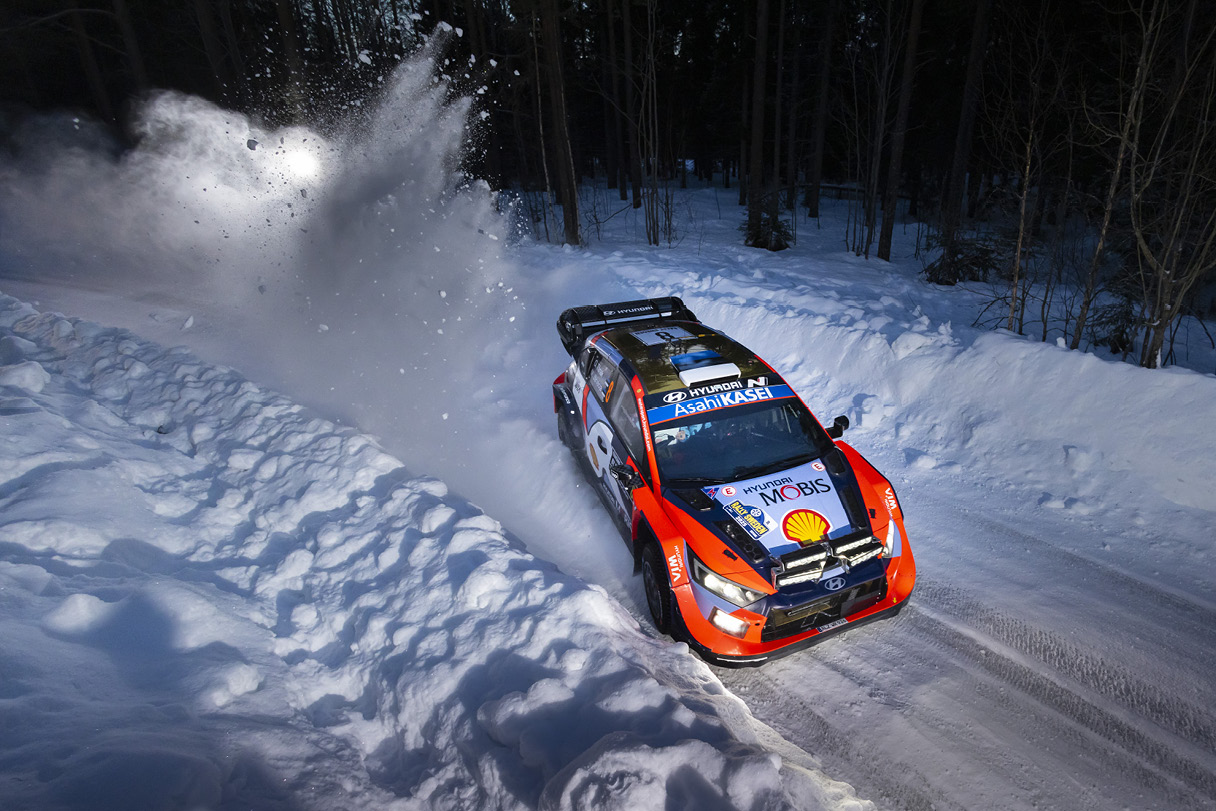
Sunday, February 16, featured just three stages. The SS16 Västervik stage, the longest of the Swedish Rally at 29.35 km, was based on last year’s 25.5 km version. It opened with a series of rhythmic corners before extending the final section by an additional 4 km. After running the stage twice, the ultimate showdown came on an extended version of the Umeå Sprint—doubling as the Power Stage—stretching 8.62 km to decide the victor. In total, the three stages covered 67.32 km, and every team trimmed weight by opting to carry only one spare tire.
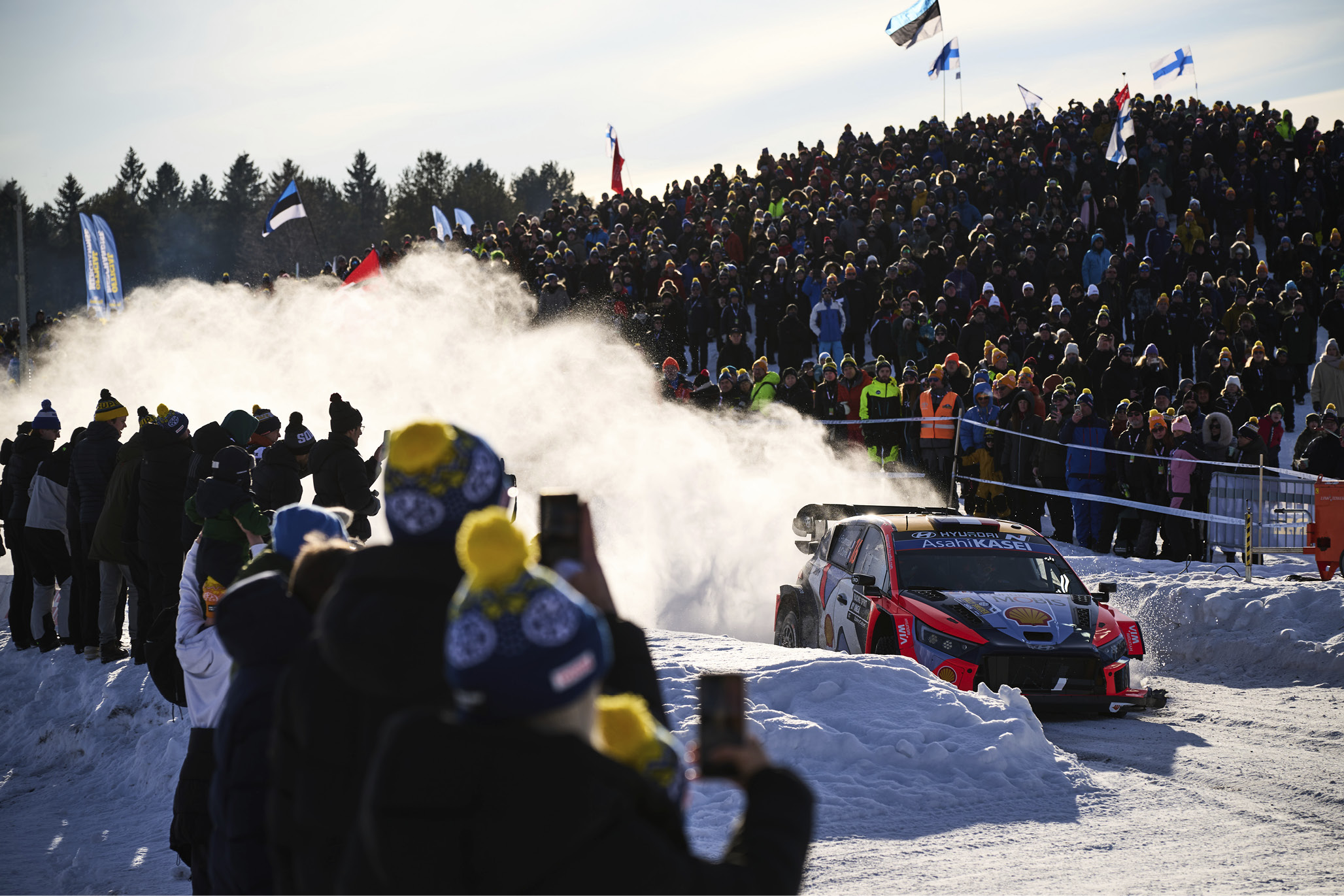
Drivers battled the brutal conditions right to the final day as high-speed snow rally challenges claimed more competitors. Video: WRC (https://www.wrc.com)
Returning after retiring the day before, Fourmaux was the first to hit the stage on Sunday. With extra points on the line, he knew he had to give it his all—but starting first meant he was stuck with a freshly swept track. "There is not much I can do now. There is a lot of sweeping today, so the strategy is only PS. I think it will be difficult to do a good time,” he explained.
On the opening SS16, Katsuta clocked the fastest time, knocking Evans off the top spot to take overall lead. Meanwhile, M‑Sport Ford’s McErlean was swallowed by a heap of snow and had to retire. When the SS17 stage—another run of Västervik—rolled around, Evans reclaimed the lead with the quickest time, while Neuville held steady in third, trailing the leader by 11.1 seconds.
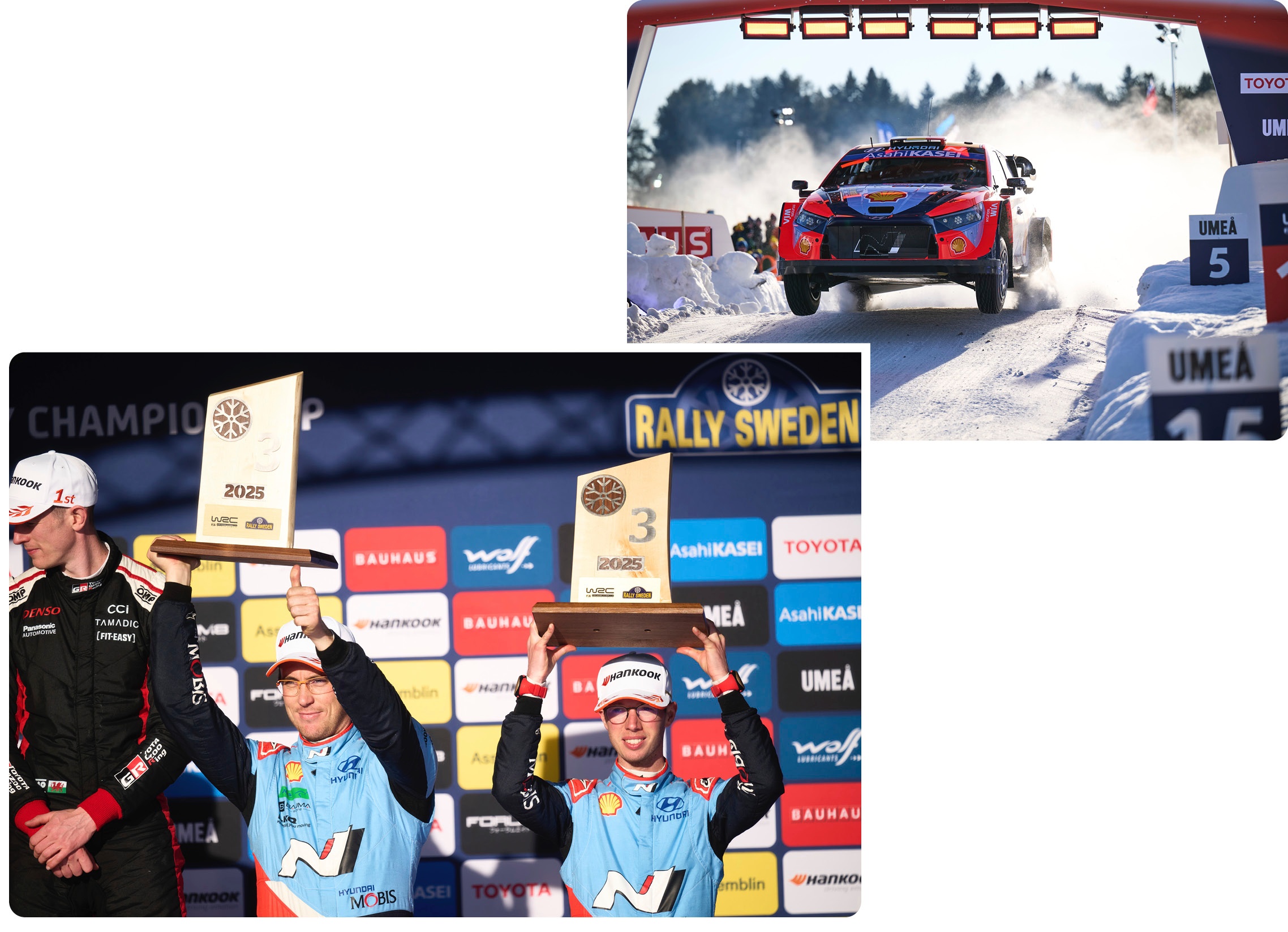
In SS18, Evans again posted the fastest time, scooping both the Swedish victory trophy and an extra 5 Power Stage points. Katsuta couldn’t close the gap, finishing 3.8 seconds behind. Despite fighting hard until the end, Neuville had to settle for third place on the podium. He was followed by Tänak, just 4.9 seconds behind Neuville in fourth, with Rovanperä, Sesks, Pajari, and Munster rounding out the top six. In the WRC2 category, Oliver Solberg led the charge, with Korhonen and Heikkila right on his tail.
Leaving behind the icy grip of the Arctic Circle, the crews set their sights southward as they prepare for round three in Kenya. Scheduled for March 20–23, the Safari Rally is known as the hottest and most grueling survival test in the WRC. A storied event that made its comeback in 2021, the Safari Rally is one Hyundai team has yet to win—but after a series of early-season podiums, they’re hopeful for a breakthrough performance.
Written by: Soo-jin Lee
In 1991, Lee’s passion for cars led him to enthusiastically write letters to the newly launched Korean car magazine Car Vision. This unexpected connection led him to start his career as an automotive journalist. He has served as editor and editorial board member for Car Vision and Car Life, and now works as an automotive critic. While eagerly covering the latest trends like electric vehicles, connected cars, and autonomous driving technology, he is also a car enthusiast who secretly hopes that the smell of gasoline engines will never disappear.
